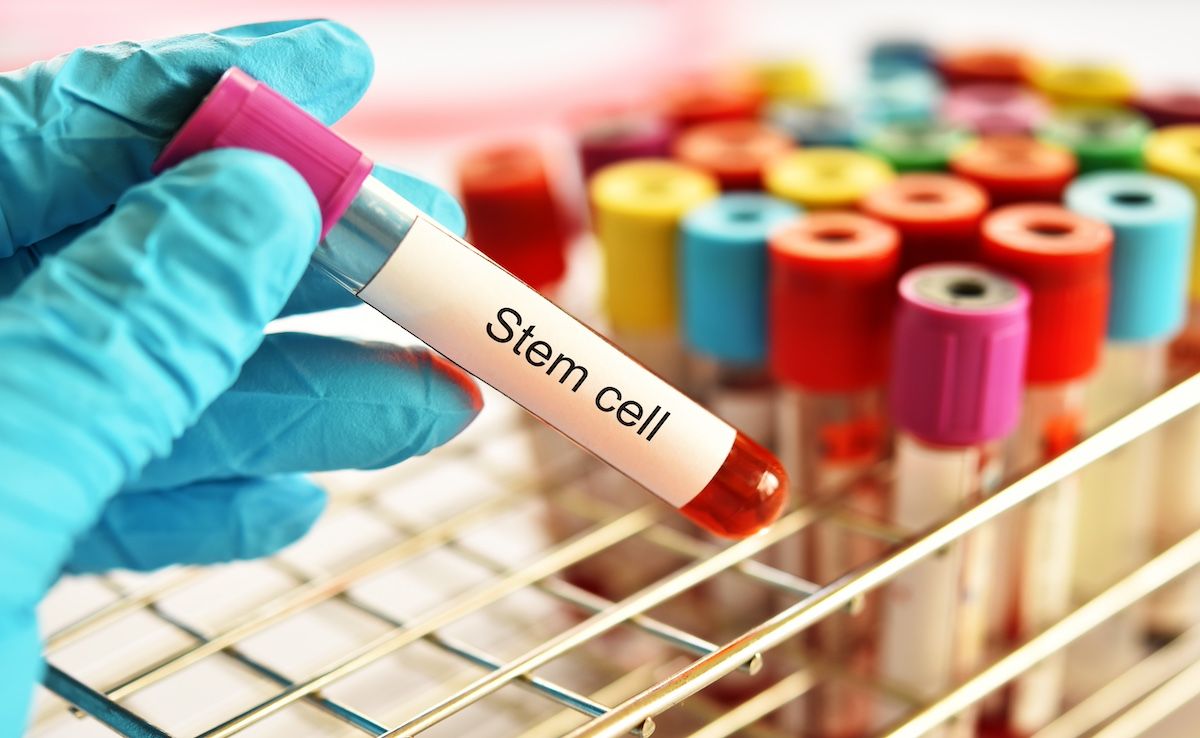- Center on Health Equity & Access
- Clinical
- Health Care Cost
- Health Care Delivery
- Insurance
- Policy
- Technology
- Value-Based Care
Second ASCT Extends Survival in Relapsed Multiple Myeloma
To continue the response they experienced with a first autologous stem‐cell transplant (ASCT) for their multiple myeloma, patients in this analysis received a second ASCT, with French investigators evaluating their outcomes.
A combination of maintenance therapy and second autologous stem cell transplant (ASCT) for patients who have relapsed multiple myeloma (MM) extended the positive outcomes of event-free survival (EFS) and overall survival (OS), according to data from 10 French tertiary care centers.
These findings, and others, were recently published in Hemasphere.1
To be included in this analysis, MM had to be diagnosed between 1996 and 2017 and all patients had to have received at least 2 high-dose chemotherapy (HDC) treatments. Patients were excluded if their second transplant was an allogeneic stem cell transplant or they underwent a frontline tandem ASCT—which is when the second ASCT occurs less than 6 months after the first.2
Patient sex was balanced in this analysis, at 49.1% female patients and 50.9% male patients. The study population was 267 patients. The median (IQR) age at second ASCT was 61 (55-64) years. Among the clinical data collected, 40.4% of patients were missing data on their international staging system (ISS), but among those with these data, stage 1 disease was most common (27%); the most common cytogenetic risk was intermediate/low (50.6%); median time without treatment after first ASCT was 40.0 (range, 28.5-58.0) months; induction treatment before the second ASCT was typically a combination of an immunomodulatory drug (IMiD) and a proteasome inhibitor (PI); melphalan, a standard of care, at 200 mg/m2 was usually the conditioning regimen for the second ASCT (68.5%); and 52.1% and 59.9% did not require consolidation or maintenance therapy, respectively, after their second ASCT.
In this investigation, 83% of patients had their second ASCT at first relapse, 10% at their second, 3% at their third, and 3% at their fourth relapse or later. | Image Credit: jarun011-stock.adobe.com

The death rate in this analysis was 1%, and 78% experienced a very good partial response or better (VGPR+) following their second ASCT. Before second ASCT, 61% had experienced a VGPR+. When EFS and OS were scrutinized after second ASCT, median EFS was 2.6 (95% CI, 2.3-2.8) years and the estimated 2-year rate of patients experiencing this outcome was 63% (95% CI, 57%-70%). OS was 8.1 (95% CI, 5.9-not estimable) years and 92% (95% CI, 88%-95%), respectively.
Most patients (83%) underwent their second ASCT following their first MM relapse, 10% at their second, 3% at their third, and 3% at their fourth relapse or later. HDC was less intense (14%, melphalan 140 mg/m2; 5%, melphalan 100 mg/m2) if the second ASCT was given following a second or later relapse, but these patients also then had a lower response rate to their second ASCT compared with patients who underwent their second ASCT following their first relapse (75% vs 87%). However, the investigators also saw that a more intensive course of HDC was not linked to a better VGPR+ rate vs 200-mg melphalan (81% vs 80%).
The study authors noted, “Used MM therapies led to a better VGPR+ rate afterASCT2 when compared to conventional chemotherapy or radio-therapy alone (82% vs 29%).”
Sixty-four percent of patients received their second ASCT after 2015 and 36% prior to 2015. The patients treated before 2015 were older (62 years vs 60 years), had an 11-month advantage in time to next treatment following their first ASCT (43 vs 32 months), and were more than twice as likely to be treated with a combination of steroids, and IMiD, and a PI (68% vs 30%).
Following the second ASCT, more patients received consolidation therapy vs maintenance therapy (48% vs 40%), and 27% received both. The combination of an IMiD and a PI was most common (59%) for consolidation treatment and an IMiD alone (81%) for maintenance. Median (IQR) maintenance treatment was 15 (8.5-24.5) months.
VGPR+ status and maintenance treatment after the second ASCT led to a 40% improvement in EFS (HR, 0.6; 95% CI, 0.3-0.9; P = .012) and a 60% jump in OS (HR, 0.4; 95% CI, 0.3-0.6; P < .001). Male sex trended toward worse outcomes for both measures:
- EFS: HR, 2.5 (95% CI, 1.7-3.7; P < .001)
- OS: HR, 2.7 (95% CI, 1.4-4.9; P = .002)
Strengths of these results are that they echo previous research and that their patient population is one of the largest to show positive survival outcomes following a second ASCT. Also, that a second ASCT for relapsed MM is accomplishable and effective without major toxicities. A principal limitation is that the results may not be generalizable and that this study was retrospective and noncomparative.
“The significant benefit of maintenance therapy observed here should prompt physicians who choose this strategy to maintain continuous treatment after a second intensification followed by ASCT,” the authors concluded. “Further studiesare required to clarify the role of this therapeutic approach in theanti‐CD38/immunotherapy era and age/sex impact on outcome after a second ASCT.”
References
1. André A, Montes L, Roos-Weil D, et al. Impact of second autologous stem-cell transplantation at relapsed multiple myeloma: a French multicentric real-life study. Hemasphere. 2024;8(8):e106. doi:10.1002/hem3.106
2. Tandem autologous transplant treatment. Iowa Health Care. June 2016. Accessed August 20, 2024. https://uihc.org/health-topics/tandem-autologous-transplant-treatment
Integrated Care for Chronic Conditions: A Randomized Care Management Trial
December 3rd 2025The authors sought to understand the differential impact of payer-led community-based care management approaches on stakeholder-oriented outcomes for publicly insured adults with multiple chronic conditions.
Read More
